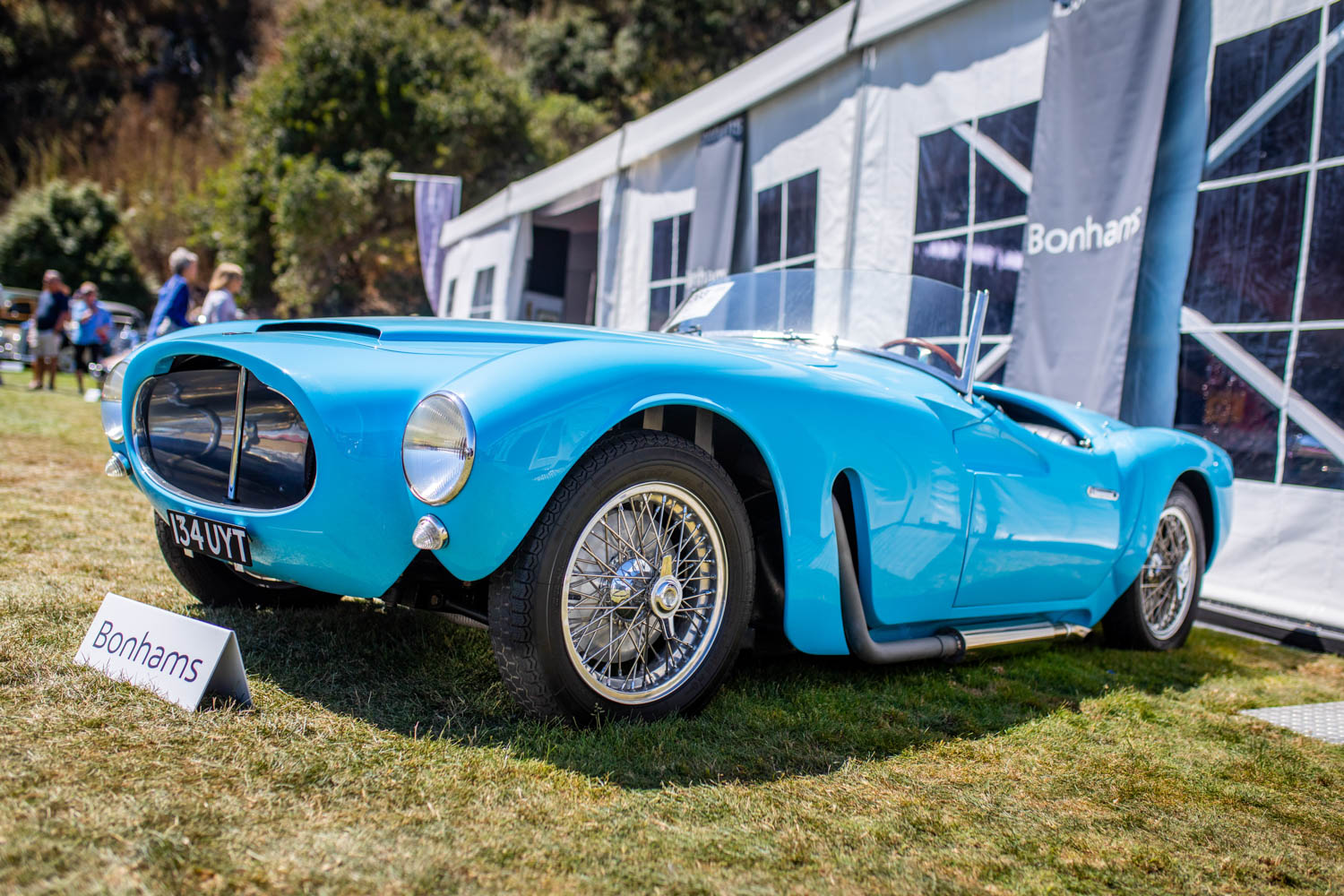5 classy yet obscure mid-century roadsters
The lines of some of these roadsters are familiar in a ghostly way—but we promise, if this were a track day instead of a mute listicle, you’d recognize them by sound. The V-8s are from the States and the sole six-cylinder hails from Germany. And those strangely-familiar lines? Several of the cars in this list were penned by Italian designers whose tastes tuned the most evocative models of the mid-century.
Think of these obscurely-branded roadsters as parts-bin cars of the ’50s and ’60s that achieved prom-queen status.
1963 Apollo 3500 GT Spider


This elegant little roadster was a globetrotter before its tires ever hit the road. Intermeccanica, a Turin-based design house founded by Canadian Frank Reisner, designed the 3500 GT prototype and handled the production-spec body with some visual editing from Bertone’s Franco Scaglione. From there, the aluminum bodies crossed the Atlantic and landed in Oakland, California, where they were matched with Buick-Special-sourced suspension and Buick V-8 engine. Californian engineer Milt Brown dreamed of the marriage of Italian styling and American reliability, and he sought to find the sweet spot between the bargain and benchmark in the early 1960s GT segment. The 3500 GT’s price point positioned it to undercut Ferrari’s 250 GT and notch above Jaguar’s E-Type, but the entire program lost financial footing. Only 86 cars were produced by a smorgasbord of builders.
The Apollo 3500 GT’s clean styling and simple elegance contrast with its complicated ancestry, but time has translated its low production numbers into exclusivity—and desirability. This particular example, one of five known to exist, has been restored by Brown himself and hits the block at Worldwide Auctioneers’ Corpus Christi sale in October.
1953 Allard J2X Le Mans


If the Moretti 1200 Sport Spider has the Ace Bristol as a cousin, then the 1953 Allard J2X might be not-too-distant kin with the Shelby Cobra. Carroll Shelby wasn’t the first to dream of Le Mans podiums and American V-8s sporting English style. Eleven years before this Daytona Coupe mysteriously didn’t show at Le Mans, one of Englishman Sydney Allard’s J2s snagged third place overall Le Mans.
Allard developed the J2X pictured three years after his Le Mans podium finish, in response to 1953 regulations mandating fully-enclosed wheels. With a 331-cubic-inch Chrysler Hemi V-8 under the hood, this J2X stomped around the SCCA circuit in the true spirit of its creator—Allard created the motor company bearing his name to back his passion for racing. In 1977, this particular J2X Le Mans did double duty at the Pebble Beach Concours d’Elegance and the Monterey Historic Automobile Races at Laguna Seca.
1955 Moretti 1200 Sport Spider

You might call the Moretti 1200 Sport derivative of the Ace Bristol and eerily similar to the late-1950s Ferrari 250 GT; and, true, cars within the same design decade often bear a familial resemblance. Each generation has its preferred dialect within the larger language of design, and what spoke elegance and speed to those in the early ’50s was open snouts of grilles, exposed exhausts, and trim proportions. Doesn’t look too shabby now, either.
What distinguishes Giovanni Moretti’s offering from the slim, round-eyed roasters of his era is his own twin-cam, inline-four motor and—compared to many other makes on this list—his company’s tenure in the automotive industry. Moretti first started wrenching on motorcycles in Turin, Italy. Then he built his own bikes and branched out into whole cars in a variety of models.
When he chose Giovanni Michelotti to design the Sport Spider, Moretti followed the standard contemporary procedure of out-sourcing design of a body to match an in-house drivetrain. In addition to penning designs for the 1200 Sport Spider, Michelotti carried a resume stamped by Bertone, Pinin Farina, and Ghia. Today, this robin’s-egg-blue roadster is the sole surviving Moretti bearing Michelotti’s design.
1967 Sunbeam Tiger Mk II


You’ll never guess how many cylinders lurk under the hood of this trim roadster. Yep, you got it: A 289-cubic-inch Ford V-8 powered the second generation of these roadsters, bumping up displacement from the initial Ford 260 in the first Sunbeams. (And yes, Carroll Shelby had a hand in this one.) The same year this removable-hardtop model was built, Chrysler bought Sunbeam and spoiled the whole party by opting not to shove in a Mopar-style V-8. Logically, a Mustang-powered roadster by any other name still spelled enemy to Chrysler.
This particular Sunbeam captures another facet of ’60s roadsters—dealership modifications. The Pacific-sea-blue Sunbeam Tiger sports “Los Angeles Tiger” wheels and an Edelbrock intake manifold, plus a Holley four-barrel carburetor. We don’t always fall for the “California car” label, but this Tiger makes a pretty strong case for itself.
1953 Hughes-Kircher Special


You might not expect this chopped-exhaust brute of a racer with the barest blade of a windshield to have two cylinders fewer than the elegant GTs above. Two soldiers—Charles Hughes and Kurt Kircher—returned from WWII and got their hands on a 300SL’s inline-6, an XK 120, and a machine shop (not necessarily in that order). Kircher hailed from GM’s V-8 and transmission departments, and owned a shop in Colorado when he sold Hughes the XK120. The pair decided they should concentrate the awesome at their disposal, and the one-off Hughes-Kircher Special morphed to life.
Turns out this particular 300SL engine had been tuned for the Mille Miglia, so its power specs outstripped the standard, road-going 300SL’s six-cylinder. The Special roared around with it for a while, until the owner of the motor’s host SL came knocking and the Special had to make do with a standard 300SL-spec inline-6. (It’s tough being special, ya know?)
If only each project car turned out this well.

